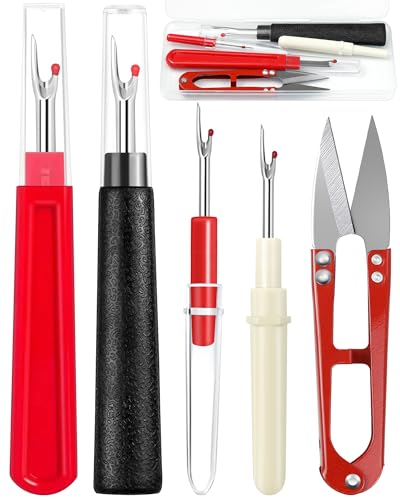Starting to sew your own clothes can feel like a thrilling adventure, and I’m here to guide you every step of the way. Whether you’re dreaming of custom-fit jeans or a unique dress, diving into sewing opens up a world of creativity and self-expression.
I remember my first project—nervous but excited. With the right tools and a bit of patience, you’ll soon find yourself stitching pieces together with confidence. From choosing fabrics to mastering the basics of your sewing machine, this roadmap will make your journey smooth and enjoyable.
Let’s embark on this creative path together and turn your sewing aspirations into reality. Whether you’re a complete beginner or looking to refine your skills, I’ve got tips and insights to help you sew clothes you’ll love wearing.
Understanding the Basics of Sewing
Sewing fundamentals lay the groundwork for creating your first garments. Grasping essential terms and selecting the right machine ensure a smooth start.
Key Terminology
- Seam: The line where two fabric pieces are joined.
- Hem: The edge of the fabric folded and sewn to prevent fraying.
- Bias: The diagonal direction of the fabric, offering stretch.
- Notions: Small accessories like buttons, zippers, and thread.
- Pattern: A template used to cut fabric into specific shapes.
Types of Sewing Machines
Choosing the right sewing machine enhances your crafting experience. Here are common types:
| Type | Features | Best For |
|---|---|---|
| Mechanical | Manual dials, straightforward functions | Beginners, basic projects |
| Electronic | Automated settings, LCD displays | Intermediate users |
| Computerized | Programmable stitches, USB connectivity | Advanced projects, customization |
| Overlock (Serger) | Simultaneous stitching and trimming of edges | Professional finishing |
| Embroidery | Specialized for detailed embroidery patterns | Decorative designs |
Selecting a machine depends on your project needs and skill level. Mechanical models offer simplicity, while computerized options provide versatility for complex designs.
Essential Tools and Materials
Starting your sewing journey requires the right tools and materials to ensure success. Here are the essentials every beginner needs.
Must-Have Supplies for Beginners
- Sewing Machine: A basic mechanical machine handles most beginner projects efficiently.
- Fabric Scissors: High-quality scissors provide clean cuts; use them exclusively for fabric.
- Measuring Tools: A 60-inch tape measure and a clear ruler offer accurate measurements for precise sewing.
- Pins and Needles: Size 70/10 pins secure fabric pieces, while universal needles suit both machine and hand sewing tasks.
- Thread: A variety pack of polyester thread covers different fabric types and project needs.
- Seam Ripper: Essential for correcting mistakes by removing unwanted stitches quickly.
- Cutting Mat: A self-healing cutting mat protects surfaces and ensures smooth fabric cutting.
Choosing the Right Fabrics
- Fiber Content: Cotton provides ease of handling and breathability, while polyester offers durability and wrinkle resistance.
- Weight: Lightweight fabrics suit blouses and dresses, whereas heavyweight fabrics are ideal for jackets and structured garments.
- Stretch: Non-stretch fabrics ensure clean lines for tailored pieces, whereas stretch fabrics accommodate movement in activewear.
- Pattern and Print: Choose patterns that align with your design vision and ensure they are suitable for the intended use, such as solid colors for seamless layering or bold prints for statement pieces.
- Care Instructions: Select fabrics that match your maintenance preferences, whether they require machine washing, hand washing, or dry cleaning.
Setting Up Your Sewing Workspace
Creating an efficient sewing workspace boosts your productivity and enjoyment. Here’s how to organize your tools and set up a comfortable environment.
Organizing Your Tools
I keep my sewing tools neatly arranged to streamline my projects. Start by categorizing your tools:
- Sewing Machine Accessories: Store bobbins, needles, and presser feet in a dedicated box.
- Cutting Tools: Use a drawer organizer for scissors, rotary cutters, and rulers.
- Measuring Tools: Keep tape measures, seam gauges, and pattern weights in an easily accessible spot.
- Storage Solutions: Utilize shelves or pegboards to display frequently used items, reducing search time and clutter.
Labeling each section ensures you can find what you need quickly. Investing in storage containers with clear labels saves space and maintains order.
Creating a Comfortable Environment
A comfortable workspace makes sewing enjoyable and sustainable. Here are key elements to consider:
- Lighting: Ensure ample lighting with a bright overhead lamp and a flexible task light for detailed work.
- Ergonomics: Choose a supportive chair and set your sewing machine at a height that prevents strain.
- Ventilation: Keep your area well-ventilated to avoid inhaling fumes from adhesives or fabrics.
- Personal Touches: Add inspiring decor like artwork or plants to make your space inviting and motivating.
- Noise Control: If you prefer quiet, consider using noise-canceling headphones. Alternatively, play your favorite music or podcasts to enhance your sewing sessions.
Adjusting these elements creates a workspace where you can focus and enjoy your sewing projects.
Learning Basic Sewing Techniques
Mastering basic sewing techniques builds a strong foundation for creating your own garments. Understanding the differences between hand and machine sewing and learning essential stitches are crucial steps in your sewing journey.
Hand Sewing vs. Machine Sewing
Hand sewing offers precision and control, ideal for detailed tasks like finishing seams or repairing garments. Machine sewing enhances efficiency, allowing you to complete larger projects quickly. Choosing between them depends on the project size and the level of detail required.

- Hand Sewing: Best for intricate work, small repairs, and projects without access to a sewing machine.
- Machine Sewing: Suitable for constructing entire garments, handling multiple layers, and achieving consistent stitches.
Combining both methods often yields the best results, leveraging the strengths of each technique.
Essential Stitches to Master
Learning fundamental stitches is essential for any sewing project. These stitches provide the versatility needed to handle various tasks.
- Straight Stitch: Used for basic seams and construction. It’s the most common stitch in machine sewing.
- Backstitch: Provides extra strength for seams that will endure stress. Ideal for attaching buttons or reinforcing edges.
- Overcast Stitch: Prevents fabric edges from fraying. Perfect for finishing raw edges.
- Zigzag Stitch: Offers flexibility and stretch, useful for knit fabrics and decorative purposes.
- Blind Hem Stitch: Creates an invisible hem, ideal for professional-looking finishes on pants and skirts.
Mastering these stitches ensures you can tackle a wide range of sewing projects with confidence and precision.
Starting with Simple Projects
Starting small helps build your confidence and skills. Here are some projects perfect for beginners.
Easy Clothing Projects for Starters
- Pillowcases: Learn basic stitching with straight seams.
- Tote Bags: Practice sewing handles and hems.
- Simple Skirts: Use elastic waistbands for an easy fit.
- Elastic Waist Shorts: Perfect for understanding proportions and sizes.
- Basic T-Shirts: Introduce yourself to neckline finishes and sleeves.
Step-by-Step Project Guidance
- Choose a Pattern: Select a simple pattern with clear instructions.
- Gather Materials: Ensure you have the right fabric, thread, and tools.
- Measure Accurately: Take precise body measurements for a better fit.
- Cut Fabric: Follow the pattern to cut your fabric pieces correctly.
- Sew Seams: Use straight stitches, reinforcing at the start and end.
- Assemble Pieces: Follow the pattern order to piece your garment together.
- Finish Edges: Hem and add any necessary details like buttons or zippers.
- Try It On: Make adjustments as needed for the perfect fit.
By following these steps, you’ll complete your first projects with ease and satisfaction.
Tips for Improving Your Sewing Skills
« You Won’t Believe These 10 Quilting Patterns for Stunning Designs
How to Thread a Sewing Machine for the First Time: 7 Secrets Every Beginner Must Know »
Enhancing my sewing skills involves consistent practice and engaging with the sewing community. These approaches help me advance efficiently and stay motivated.
Practicing Regularly
I set aside dedicated time each week to sew, ensuring steady progress. Repeating essential stitches like straight and zigzag refines my technique. Working on diverse projects, such as shirts, skirts, and bags, broadens my skill set. Challenging myself with new patterns accelerates learning and boosts confidence.
Joining Sewing Communities
I join sewing communities to gain support and exchange knowledge. Participating in online forums like r/sewing and attending local sewing groups connects me with experienced sewers. Engaging in workshops provides hands-on learning opportunities. Sharing projects, seeking feedback, and learning from others’ experiences enhance my sewing abilities and inspire new ideas.
Conclusion
Starting to sew has opened up a world of creativity and self-expression for me. I love the feeling of bringing an idea to life and wearing something I’ve made with my own hands. Remember every expert was once a beginner and each project you complete will boost your confidence and skills. Embrace the learning process and enjoy the journey as you create garments that reflect your personal style. I’m excited to see where your sewing adventures take you and can’t wait to hear about your successes. Happy sewing!


















